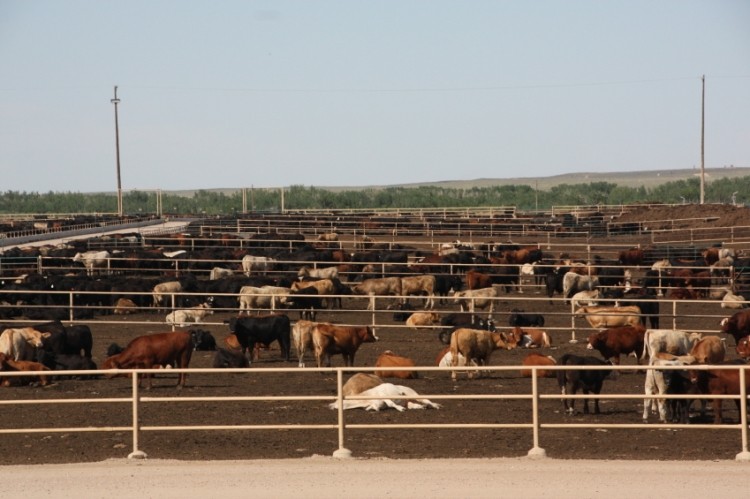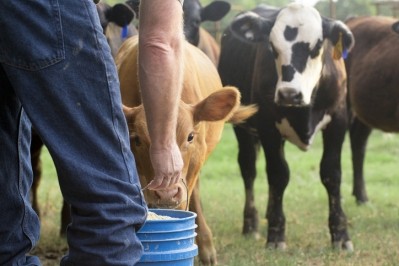Increase in US agricultural market concentration has negligible price impacts: USDA report

The changing state of the US agricultural market, including pricing trends and the move toward the vertical integration of of livestock production, was examined in the report Thinning Markets in US Agriculture released last month by the Economic Research Service (ERS) of the US Department of Agriculture (USDA).
“Despite sharply increased concentration in many US agricultural markets, most research finds that it has had negligible price impacts,” noted report authors. “Even in short-run theoretical models, greater concentration does not necessarily mean significantly lower prices to producers.”
Instead, as processors look toward the medium and long-range future they tend toward a pattern of establishing relationships with producers including paying at least market prices for commodities, the authors said in the report. That practice keeps established suppliers in business and secures future supply lines.
However, the system also lacks transparency, which can result in suspicion and make regulatory efforts and providing crop insurance more challenging, they said.
“Financial distress, a declining market, and higher uniformity of farm products also make short-run profits via market power more attractive to processors (even though this can lead farmers to instead plant alternative crops, degrading long-run processor returns),” they said. “Additionally, smaller producers can be left behind in thin markets due to the transaction costs associated with contracting and scale economies in production.”
Livestock markets 'increasingly thinning'
In some thinning markets, the traditional cash market has moved toward programs like bilateral contracting and vertical integration, said report authors. Both procedures offer increased control to processors.
Although the move toward stable relationships has brought about some efficiency gains, it also has reduced the amount of public pricing information, which may increase questioning over pricing, they said. “Economists refer to markets as thin when they have a small number of buyers and/or sellers, low liquidity, and relatively few observable transactions (Hayenga et al., 1978),” they added.
An example of a thick market would be a feed crop like corn, where producers can sell to an elevator, another buyer, store it for later use or sell it to a feed processor, they said. But other feed crops, like sorghum, fall in the middle of the spectrum as they are closely related to another feed and have an active cash market, but inactive derivatives.
And, while some production areas have always had thin markets, others like livestock markets are increasingly thinning, said authors. “The four largest packers now account for nearly 70% of the value of all US livestock purchased for slaughter, compared to just 26% in 1980,” they added.
In cattle, this trend has meant that all the cattle slaughtered by the top four firms went from 39% to 69% from 1985 to 2006 and fed-cattle harvested by the top four firms moved from 36% in 1980 to 85% in 2012.
Expensive technology and efficiencies of scale have led to a consolidation at several areas of agricultural production including the farm, processing and retail areas, noted the report.
From 1987 through 2012 the number of US farms that produced 50% of all sales declined across the board, they said. In terms of feed grain producers and other crops farms went from about 41,000 to 20,200; cattle or calves producers dwindled from almost 40,000 to less than 13,000; dairy producers dropped from 11,828 to 4,211; poultry producers fell from 12,776 to 6,123 and pigs went from about 15,000 producers in 1987 to about 4,500 in 2012.
Additionally, the development of specific niche markets has also served to condense the numbers of providers in specific areas, they said. “Today, large agricultural firms seek to process or market differentiated farm products aimed at diverse consumer preferences, and consequently, producers have fewer potential buyers,” they added.
Future policy steps
There are policy steps that could be taken to further address thinning markets, said report authors. These include practices like standardizing contracts and clarifying price discovery.
Offering standardized contracts might limit reward opportunities for producers meeting specific targets, they said. But, it also could protect smaller producers.
“Establishing a common format in each market that uses clear language to communicate terms—while allowing terms to differ between negotiating parties—reduces transaction costs and improves the footing of small producers (while preserving efficiency gains),” they said. “Efforts to collect sample contracts for informational purposes can aid this process.”
The practice of limiting vertical integration also may have both positive and negative results, they said.
“Banning or limiting packer-owned livestock would not necessarily increase cash market volume and price transparency,” said authors in the report. “Instead, affected packers would have incentive to contract with producers since contracting offers at least partial control over the production process (for livestock, feed inputs, living conditions, and the quality and age mix of animals to promote packer efficiency).”
However, it could be helpful to small producers to provide more information about anticipated market conditions, along with production or marketing advice through public services
“Small producers operate at a disadvantage in thin markets because limiting transaction costs drives processors to contract with the fewest producers necessary to achieve their desired output,” they said. “Rational processors target the most efficient producers and these tend to be the largest (due to scale economies), which can cause small producers to exit the industry and, potentially, the rural community.”
One element that has been put in place to provide more information even as some markets thin is mandatory price reporting (MPR), said authors in the report. In certain livestock markets, an MPR was established in 1999 to provide more with price and transaction information and data suggest that price efficiency has improved.

![[pic: (c) istock.com/Veresovich]](/var/wrbm_gb_food_pharma/storage/images/_aliases/wrbm_medium/1/7/6/2/1202671-1-eng-GB/USDA-raises-global-wheat-stocks.jpg)









